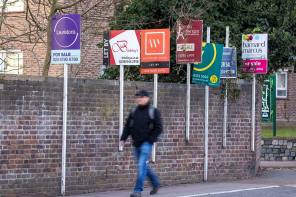

Buy-to-let mortgage sales carried out via an intermediary have jumped 12.6 per cent by value despite a more challenging tax and regulatory climate.
The month-on-month increase between September and October took the total value of intermediated buy-to-let lending to £358.3m, according to Equifax Touchstone.
Residential lending rose by 6 per cent on the previous month to £701.8m, while overall mortgage sales climbed by 7.3 per cent to £1.1bn.
The buy-to-let sector has been hit by 2016’s 3 per cent stamp duty surcharge on additional properties and the gradual phasing out of income tax relief for landlords, which is set to take place by 2020.
A further blow came with the Prudential Regulation Authority’s (PRA) introduction of more stringent affordability rules on 1 January this year, followed by stricter underwriting guidelines for portfolio landlords to be brought in by the end of September.
But despite some forecasts of gloom for the sector – Savills has predicted the number of buy-to-let investors will drop from 75,000 to 55,000 over the next five years - today's figures suggest intermediated buy-to-let is holding up well.
Matthew Fleming-Duffy, director at Bournemouth-based Cherry Finance, said the figures showed the market was becoming more specialist.
He said: “Particularly the PRA guidance on portfolio landlords, but also just generally with buy-to-let lending in particular coming into the sights of the Bank of England, it has become a bit more specialist and is not as straightforward as it used to be.
“It has become more complex. Lenders have to start looking at more details, doing affordability checks and stress testing, and there is the impact of the income tax changes. There is a lot more that needs to be considered when a mortgage application is being assessed.
“It does require more specialist knowledge. That, almost by definition, should feed into an intermediary with a broader view of the market and more background in the industry.”
Regional figures covering all mortgage lending show Wales led the way in terms of growth with a rise of 14.1 per cent, followed by the South West, which recorded a monthly increase of 10.3 per cent.
Northern Ireland and Scotland trailed behind other parts of the UK, with small increases in sales for both regions of 0.4 per cent.
The data from Equifax Touchstone, which covers the majority of the intermediated lending market, shows that the average value of a residential mortgage in October was £196,112, up from £191,307 the previous year, and £153,197 for buy-to-let, down from £160,339 in 2016.
John Driscoll, director at Equifax Touchstone, said: “Mortgage sales in the UK have remained strong once again, with buy to let sales in particular enjoying positive growth for the third consecutive month, despite ongoing political uncertainty.
“The outlook for the market remains murky as the fallout from the recent rate hike on sales remains to be seen. However, if rumours of a stamp duty cut becomes a reality in tomorrow’s Budget, this will generate positive sentiment among prospective buyers and could offset any negative effects from the rate increase.”
| Region | Total mortgage sales growth |
| Wales | 14.1% |
| South West | 10.3% |
| North and Yorkshire | 9.1% |
| North East | 9.1% |
| Home Counties | 8.2% |
| London | 7.7% |
| Midlands | 7% |
| North West | 6% |
| South Coast | 4.7% |
| South East | 3.7% |
| Northern Ireland | 0.4% |
| Scotland | 0.4% |
simon.allin@ft.com



